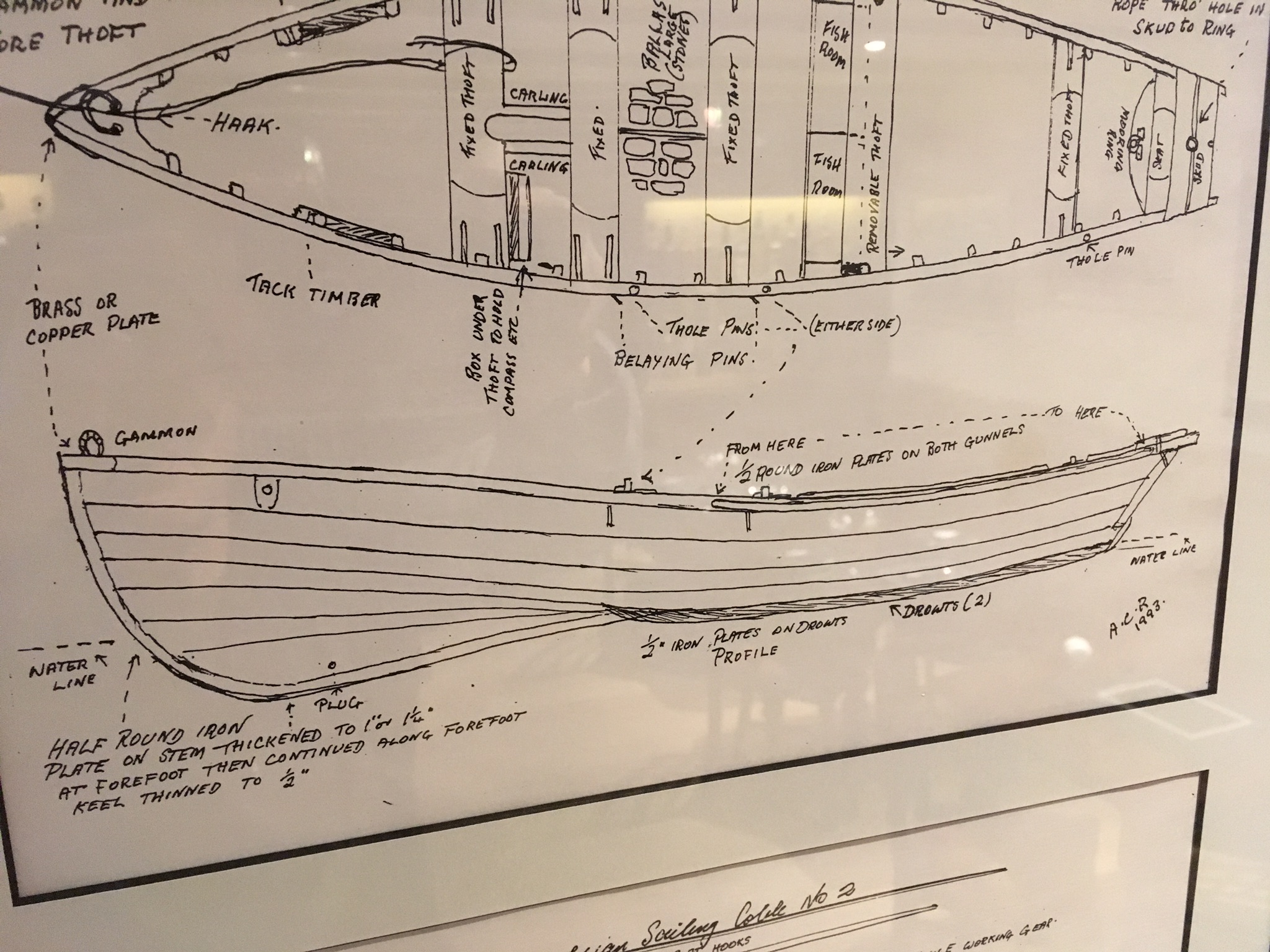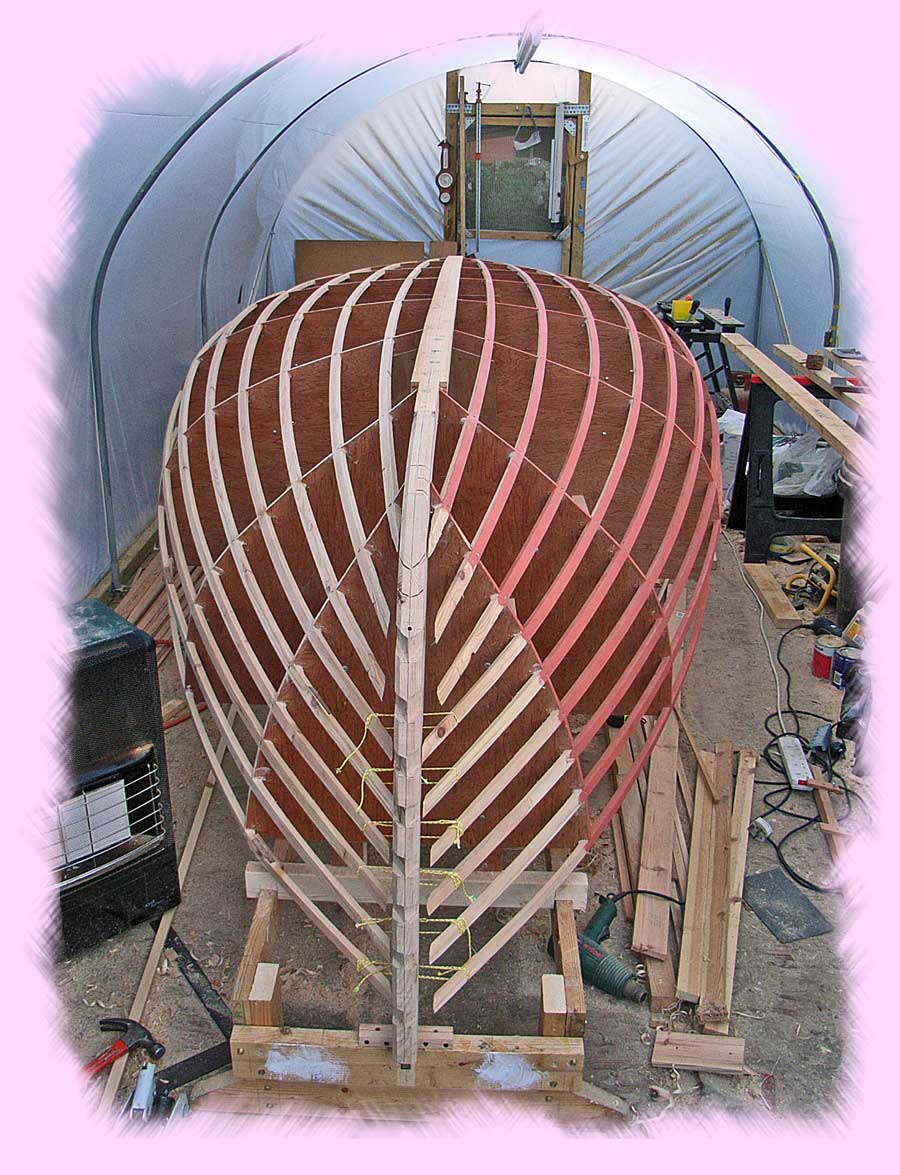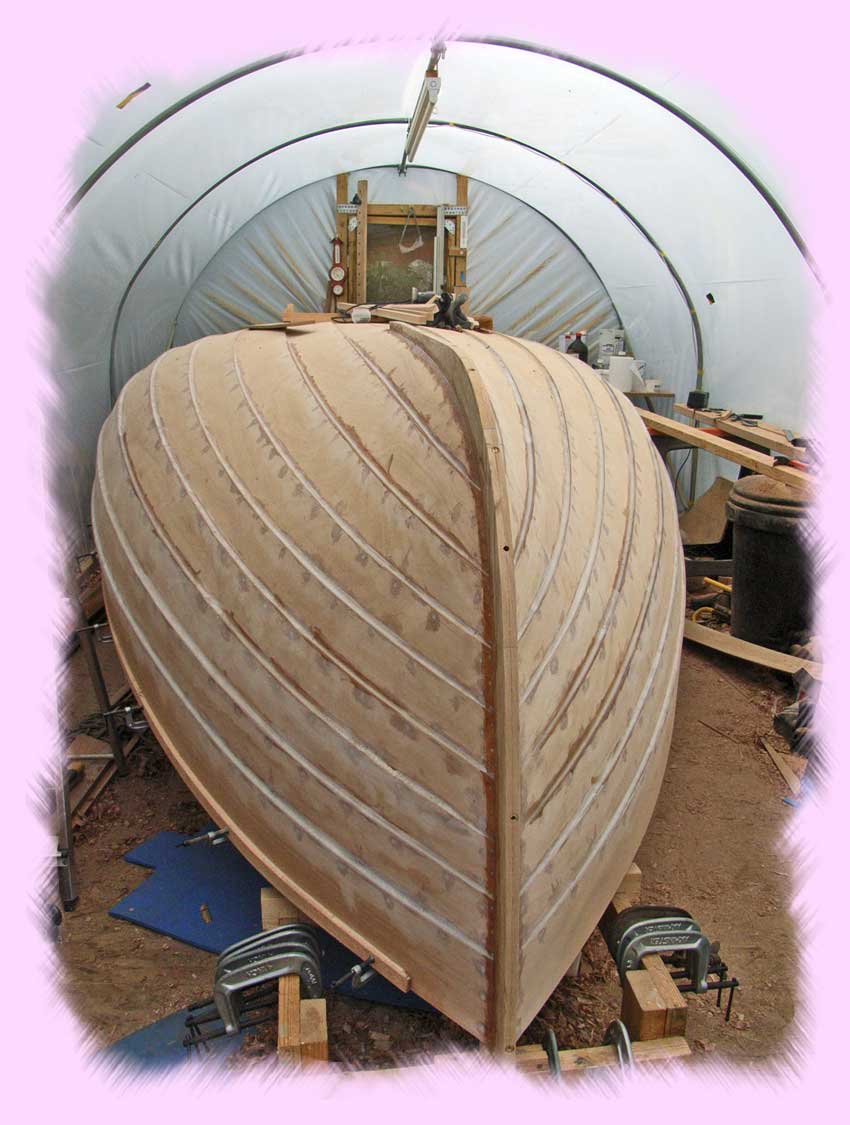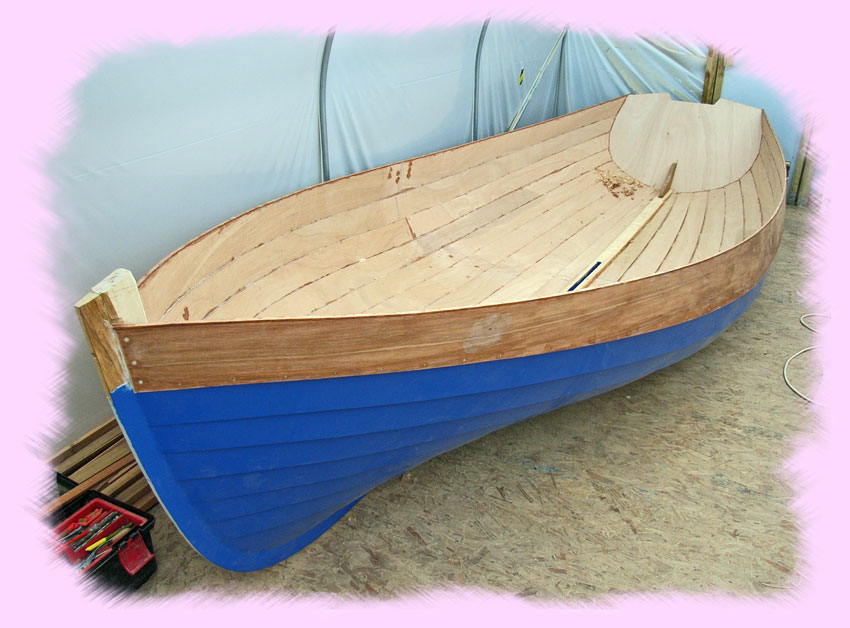2021.04.16 - Northumbrian Coble
I have really missed boat building, and since Naiad was initially launched the only boat work I have carried out is repairs and modifications to Naiad. Whilst that is quite satisfying in itself and I enjoy the results, building a boat from a pile of timber something else entirely and I really enjoy it.
So, I plan to build a Northumbrian Coble next year, starting in the Summer and continuing on through the Winter with the intention of have her ready to launch sometime in the Spring of 2023. Why a Coble and a Northumbrian Coble at that?
It started a couple of years ago when a friend of ours showed a photo of some boat sketches he'd found hung on a wall somewhere.

I was really taken with that hull shape and did some research on Northumbrian Cobles as a result. When I decided to build another boat I revisited the Northumbrian Coble and decided that this was the one that I'd build next.
She will be built using a construction technique called "Clinker Plywood" as I haven't used this technique before and it results in a very traditional looking hull but without the intricacies of traditional clinker.
The boat plans are from Selway Fisher, a notable boat designer of some experience, and details of the boat can be found on the Selway Fisher web site here. The boat is large and roomy (15' long 5' 10" wide or 4.57m x 1.77m) and I will be building the nine-plank version, Gunter rigged with a single mast.
There are several articles on the Internet showing that several of these boats have been built before and one has some interesting comments and photos. The builder made a number of changes to the layout of the boat, some of which I agree with and will probably incorporate and some of which I disagree with including one that I consider to be a major failing and could compromise the integrity of the hull should the boat hit an underwater obstruction that hits the centreboard sideways whilst sailing with the centreboard lowered. So that one will not be included.
Now, I plan to start the boat build next year, but will start the preparations now. There is a fair bit of pre-build work that has to be done before starting the boat itself. For example, the building jig has to be constructed. This defines the shape of the hull and the planks are joined together around the jig. Once all the planks have been glued together to form the hull, the hull is removed from the jig and the interior is constructed.

Here is a photo of such a mould taken from a website called martin boat building blog (used without permission as there seems to be no way to contact Martin in order to get his permission. Martin, if you're reading this, please contact me admin @ svnaiad . uk).
Here you can see the moulds over which the ribands have been fitted. The stem, hog and transom are also in place in this photo as the planks will be fitted to these and they will be lifted out of the jig once all the planks are glued in place.

Here is another photo from Martin's website showing all the planks in place.

And another showing the competed hull removed from the building jig.
So, this building jig needs to be constructed, including the stem and hog. The transom will be a temporary one initially and replaced with a "real" one later. Having done that the patterns for the nine planks have to be made, taking the lines from the building jig. These will be made from cheap plywood and used to make the "real"planks from marine plywood when the building starts. The five plank version has the measurements for the planks in the plans, but not the nine-plank version.
So why the nine-plank version if the layout for the five-plank version is in the plans? Well, to my eye the shape of the five plank hull, although sweet, is just a little too chunky whereas the nine-plank version is a much rounder hull shape. I guess the real answer to that question is that I prefer the look of the nine-plank hull, and since I'm the one building it, that's all that counts.
The jig is build on a frame, known as a strong-back, and mine will have wheels so that I can move it around the workshop, or even out of the workshop if needs be, allowing me to do other work if required.
Much of the building jig will be made from wood that I already have in the workshop which will also help me to clean up the wood pile bomb site that inhabits the rear of the workshop. I'll also able to use a lot of the fittings that originally came with Naiad that weren't used in her rebuild. That in itself is nice as I didn't want to throw them away and probably couldn't sell them either.
In fact, the first thing to do is to sort the workshop out as it is pretty much a disaster right now. With a gaping hole all along the apex of the roof, many things in the workshop are covered in tarpaulins to keep them dry. Over on the Captain's Table you can read about the progress of the repairs to the roof and once this is done I will need to sort everything out.
So, that's where the physical part of this tale will begin. Up 'til then I'll be researching and working out how this is to be done.
Of course, I don't want another boat for myself, so once she is built and I've had a sail in her once or twice, she will be found a new owner to sail her around.
Stay tuned.